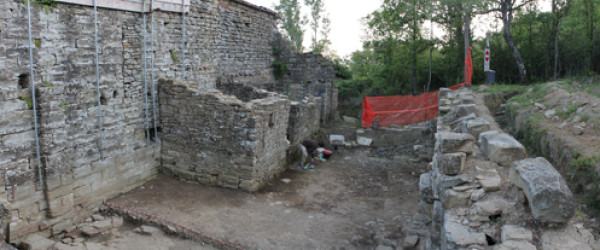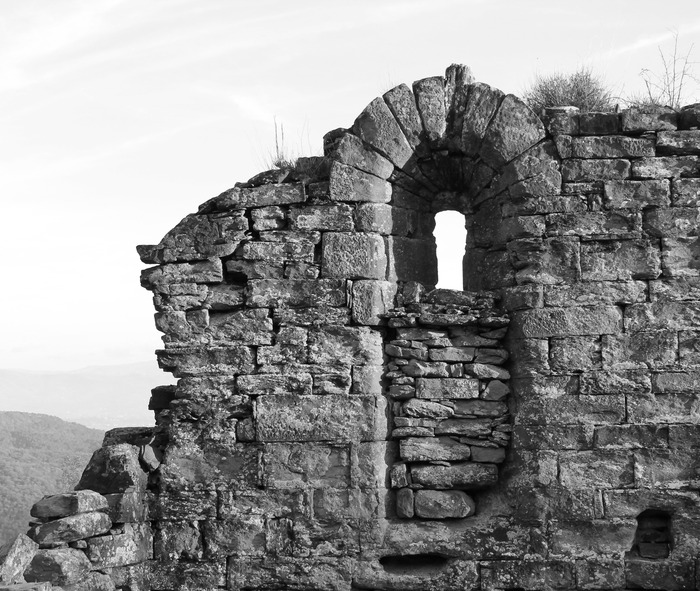
Not far from the road that connects Castiglion Fibocchi at Gello Biscardo are the evocative ruins of the church of San Quirico in Alfiano.
Today, thanks to the impetus given by the Union of Municipalities of Pratomagno which financed the first studies and archaeological investigations, but above all thanks to the passion of two young archaeologists: the dr. Francesca and Dr. Fabbrini. Salvatore Bussu, that since the spring of 2013 have begun a campaign of study and investigation, we can say that we are facing nothing short of an important witness that, from the very first results, promises to shed new light on a monument Religious absolute historical importance, for too long forgotten.
From the first stone artifacts and ceramics found immediately below the “layer collapse”, but even more by the traces of walls below said layer, it can be assumed as the church visible today, is the result of a re-building an existing church. If the continuation of the investigation were to give certainty than today barely visible, it would certainly confirmed the dating at least from the fourth and fifth century. the original church. This short statement is therefore to be considered “in progress”!



